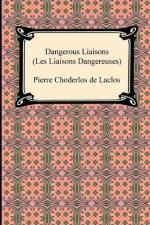|
This section contains 9,029 words (approx. 31 pages at 300 words per page) |

|
SOURCE: “Trading Genres: Epistolarity and Theatricality in Britannicus and Les Liaisons dangereuses,” Yale French Studies, No. 76, 1989, pp. 243-64.
In the essay below, MacArthur explores the ways in which Les Liaisons dangereuses and Jean Racine's Britannicus are transformed through shared text.
It is a critical commonplace to compare Racine and Laclos, for their rigorous textual construction, their creation of stiflingly closed worlds, or their culminating positions in two related genres, classical tragedy and the epistolary novel.1 In such comparisons, of course, Laclos is usually seen as very much the follower, “a little Racine”2 borrowing belatedly his illustrious model's words and adapting them as well as possible to a new context. Rather than describing the intertextual relations between Racine and Laclos in any more precise way, critics have tended to reiterate claims of influence based on resemblances between the two authors' themes or vocabulary, claims which are moreover somewhat unconvincing...
|
This section contains 9,029 words (approx. 31 pages at 300 words per page) |

|


